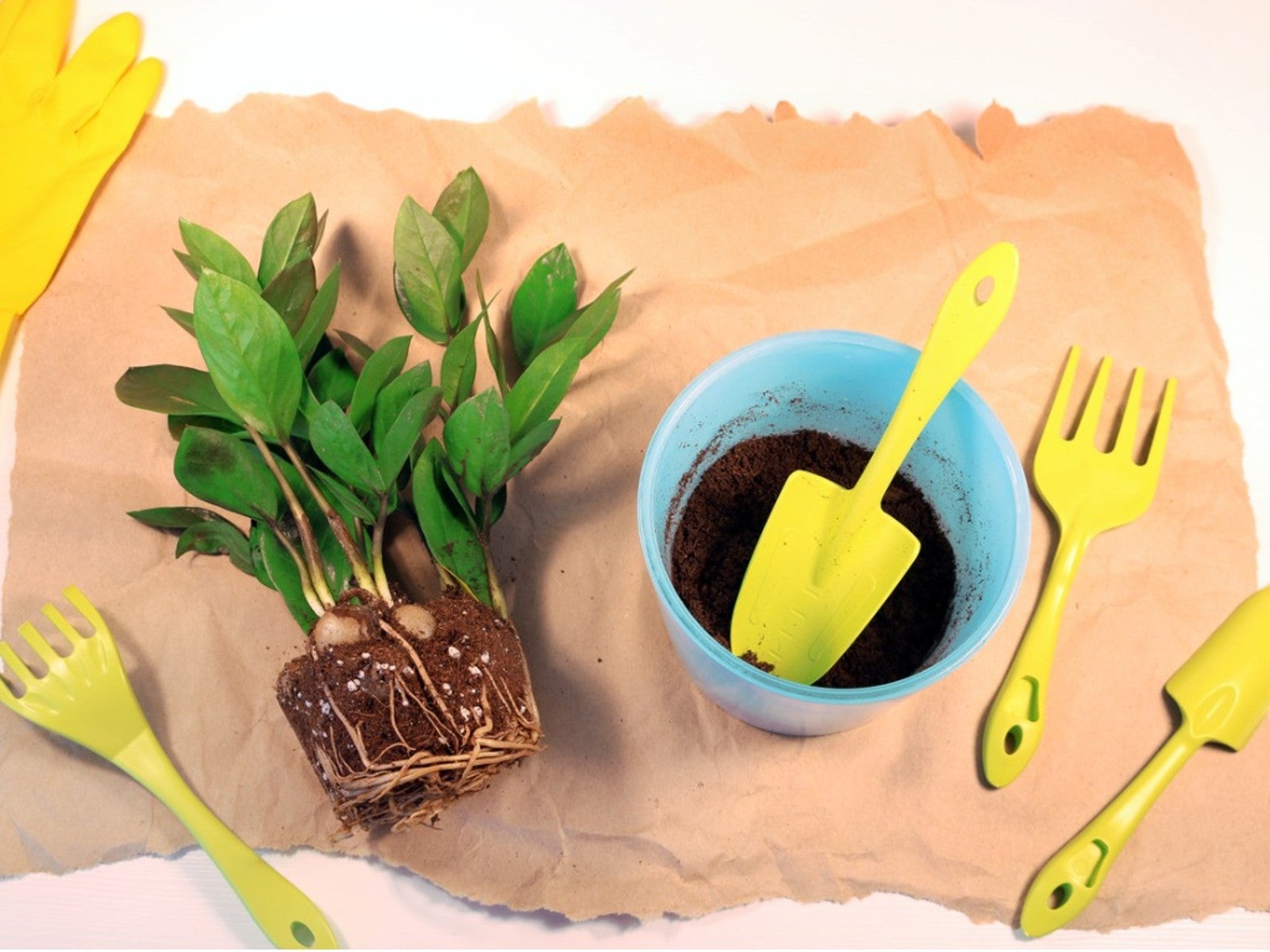
If you have provided your houseplants with appropriate light sources, water, nutrients and time, it is inevitable that they will need to be repotted. The popular ZZ plant is no exception. The question is when to repot ZZ plants? Do ZZ plants like to be root bound or should you repot them before the plant gets to that stage? Read on to learn how to repot a ZZ plant.
About ZZ Plants
ZZ plants are popular for their unique upright, zigzagged foliage. Its Latin name Zamioculcas zamifolia is in reference to its visual similarity to cycads, Zamia spp. Its common name is an abbreviation of the Latin.
Although ZZ plants look much like cycads, they are actually related to elephant ears, anthurium, and philodendron, which are aroids. Like these other aroids, ZZ plants use their rhizomes to store water which helps the specimen survive desert-like conditions in its native Eastern Africa.
ZZ plants grow more slowly as houseplants than in their native setting, but may still attain heights of 3-4 feet (just under a meter to just over) tall and 3 feet across.
Should I Repot my ZZ Plant?
Some houseplants do enjoy being root or pot bound, but the ZZ plant isn’t one of them. Their large underground rhizomes take up a lot of space in a planter. If your ZZ plant is root bound it is time to repot it.
A sure sign of a root bound ZZ plant is roots growing out of the bottom of the pot and/or roots showing at the surface rather than potting soil. If you water the plant and water runs straight out of the drainage holes, you also likely have a root bound ZZ plant.
Other signs that you should repot a ZZ plant are if the plant has stopped growing or if the foliage is pale or flaccid.
Sign up for the Gardening Know How newsletter today and receive a free copy of our e-book "How to Grow Delicious Tomatoes".
Other types of houseplants can be repotted in the same container by root pruning, but this isn’t an option for the rhizomes of ZZ plant. Instead, you will need to choose a larger pot in which to repot the ZZ plant. Generally, a ZZ plant should be repotted every 2 years.
Repotting ZZ Plant
The water-holding rhizomes of the ZZ plant are susceptible to root rot when the plant becomes pot bound. Root bound ZZ plants have difficulty accessing enough water, air and nutrients as well.
Before repotting your ZZ plant, select a pot that is one size larger than the one in which the plant is currently growing. It might be tempting to select a bigger size (so you don’t have to repot again as soon) but too large a pot will allow the soil to dry too slowly opening the rhizomes up to potential root rot.
Prior to removing the ZZ plant from its old pot be sure to wear gloves. ZZ plants produce calcium oxalate which can cause skin irritation.
Once appropriately garbed, ease the root bound ZZ plant from the old pot by flipping the plant upside down and tugging gently. Fill the new container about 1/3 full with fresh potting soil. Place the plant atop the fresh soil and fill in around the plant with additional soil. Tamp the soil down lightly and water the plant.
Another Option When Repotting ZZ Plant
If you do not have, cannot obtain or have no room for a larger pot, you can reduce the size of your existing pot bound ZZ plant by dividing it.
When you remove the plant from the old container, wash off most of the soil from the rhizomes. This will give you a better view of them. You are going to separate the rhizomes with a knife.
If you are really lucky, the plant may have produced well developed rhizomes that are only minimally attached to the parent plant. In this case a quick cut with a sterile knife will remove the pup from the parent. Look for rhizomes that have a stem.
Otherwise you can make a clean cut (no sawing) through the plant dividing it into quarters or even smaller. Once you have divided the ZZ, allow it to sit for a couple of hours to overnight before replanting the sections.

Amy Grant has been gardening for 30 years and writing for 15. A professional chef and caterer, Amy's area of expertise is culinary gardening.
